What Makes Work Worth Dressing Up For?


Style Points is a column about how fashion intersects with the wider world.
Watching Stella McCartney’s show at Paris Fashion Week, you might be forgiven for not knowing where to look. There were photocopiers and water coolers on the runway, and pole dancers performing alongside models in glitzy takes on corporate wear. “Laptop to lap dance,” McCartney called it. Or Anora meets the Adobe Creative Suite, if you like. Either way, it was enough to give an HR rep a tension headache.
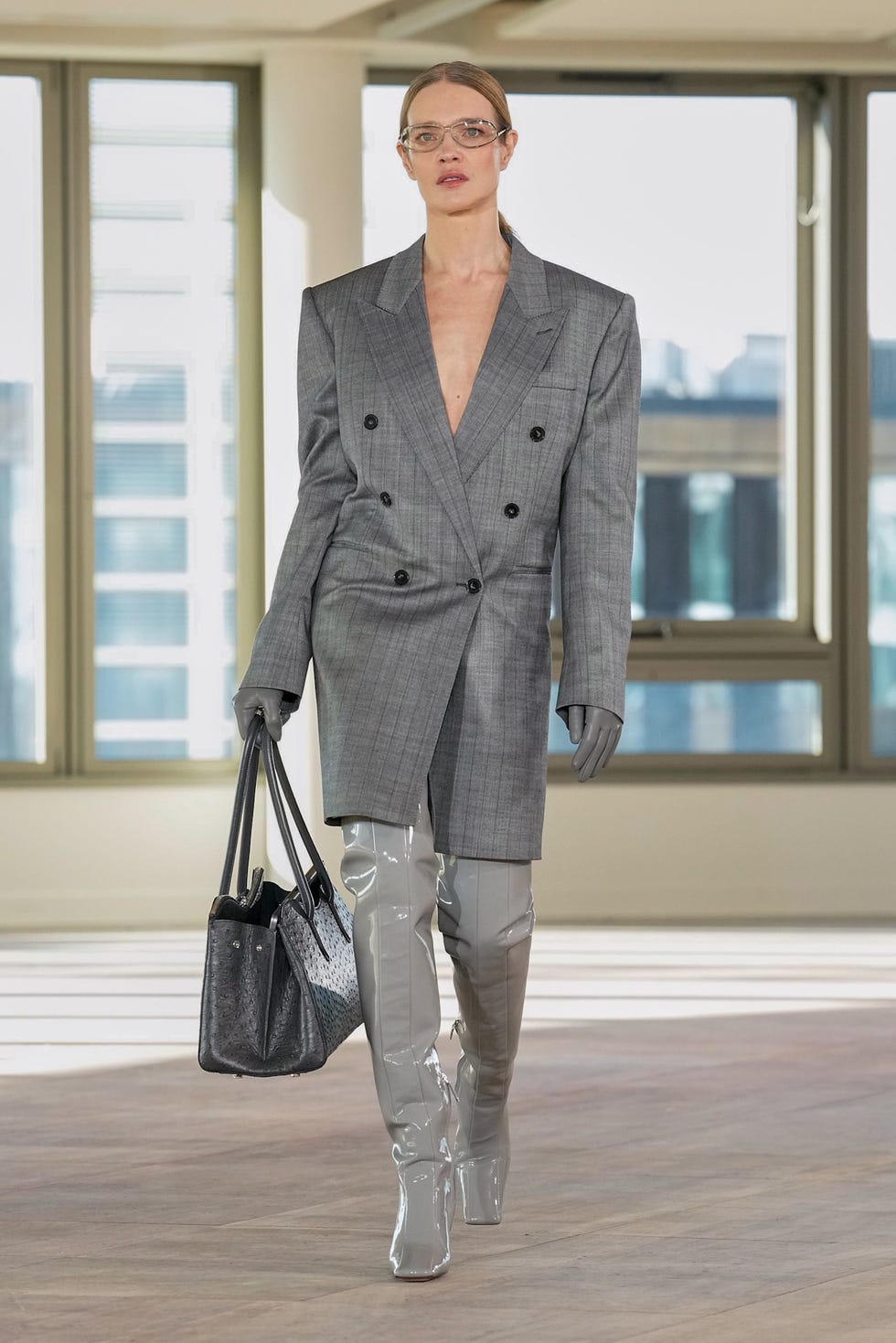
Stella McCartney fall 2025.
But while McCartney’s fetishization of the office may have been the most actually fetishistic yet, she was far from the only one on the fashion month schedule drawn to this kind of corporate cosplay. The ongoing conundrum of “what to wear to the office” played itself out at New York Fashion Week, too, as Calvin Klein, Michael Kors, and Carolina Herrera all presented their distinctive takes on the modern-day working woman. At Calvin, which made its return to the runway for the first time since 2018, Veronica Leoni opted to revitalize the brand’s ’90s minimalist office staples, while Kors and Herrera went for maximalist takes on traditional suiting, perfect for glitzing up your commute. Emerging designer Jane Wade, who has shown an ongoing fascination with modern office life (complete with collections called “The Commute” and “The Audit”), got in on the trend with a show called “The Merger,” where models sported ironic white-collar chic and Lisa Rinna acted out a “hostile takeover” at the end. Like McCartney, Wade leaned into the idea of office as theater, putting just as much emphasis on the atmosphere as she did on the clothes.
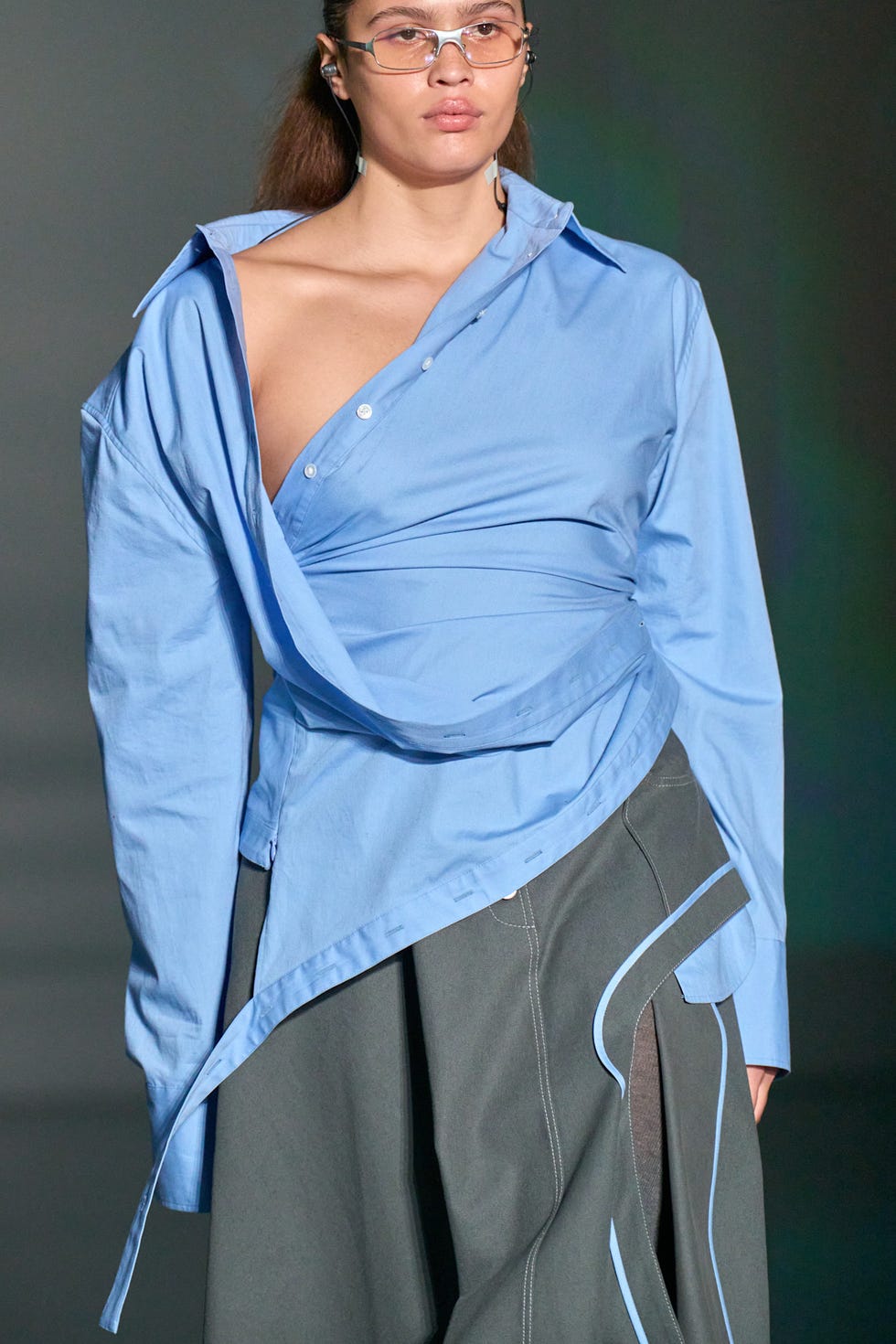
Jane Wade fall 2025.
It’s a tension that comes up in pop culture as well. In movies and TV shows like Babygirl, Industry, and Severance, relatively generic-looking corporate offices become the site of extreme drama and intrigue, and even of sexuality. Even the leisure seekers on this past season of The White Lotus find themselves haunted by work, whether it’s Jason Isaacs’s character Timothy and his brewing financial-crimes scandal or Carrie Coon’s Laurie and her dissatisfaction when she’s passed over for a promotion at her law firm.
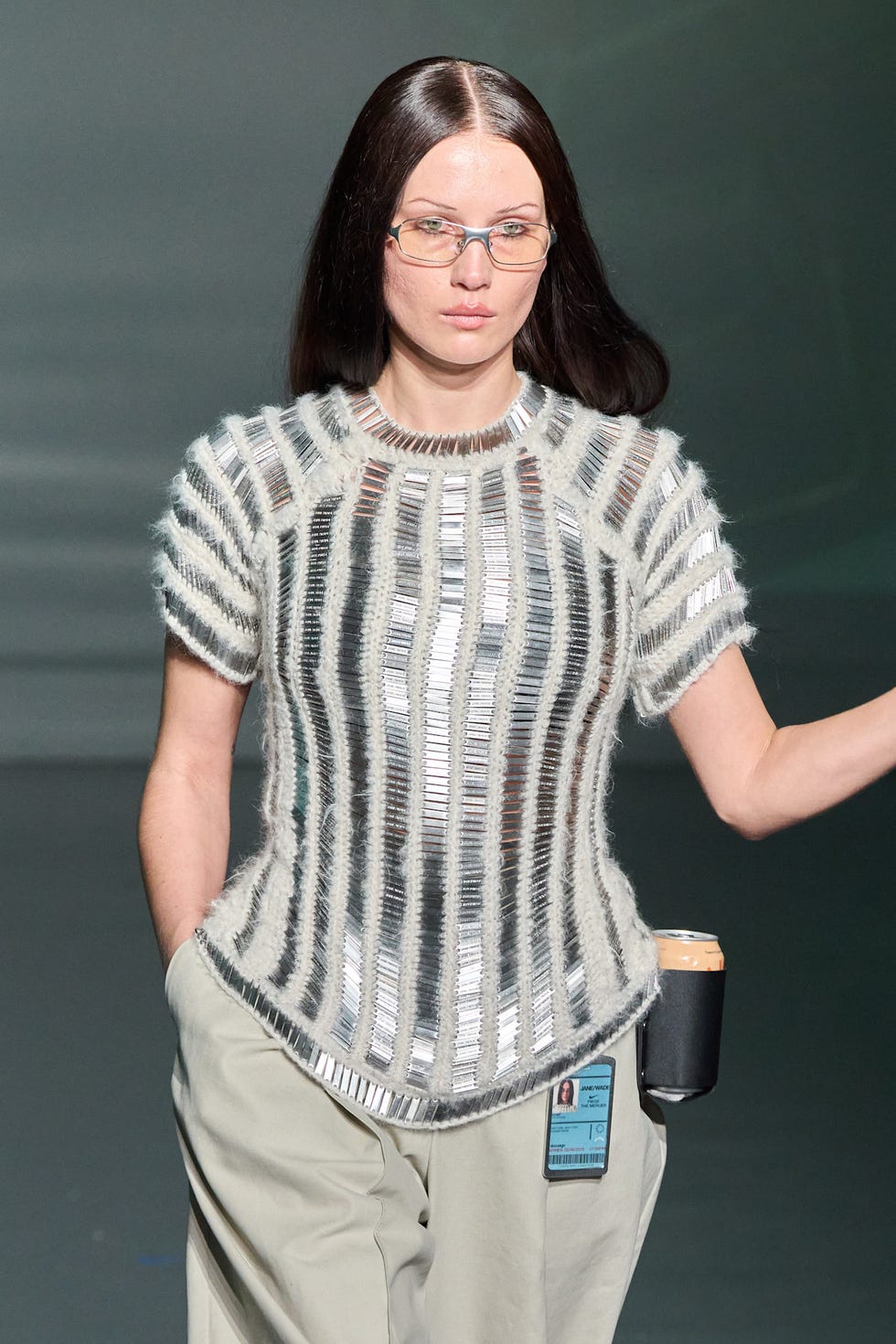
Jane Wade fall 2025.
This corporate fixation is part and parcel of our culture’s current obsession with the Establishment: people want to dress old money, channel coastal grandmothers, and, apparently, transform themselves into office sirens. Amid economic instability, AI anxiety, and tariff-induced chaos, a job is another asset, even though it’s still work. Look at pop culture depictions of office life from the ’90s and early 2000s: Gen X cris de coeur like Reality Bites, Office Space, American Beauty, Fight Club, even The Office to some degree, are about people being alienated by a corporate world that now seems incredibly cushy to a modern viewer. Now that that the lifelong, pension-assisted career has evaporated, so has the disdainful portrayal of the office as a cubicle farm where your soul goes to die. As the New York Times reported, influencers are even using generic offices as backdrops for OOTD videos.
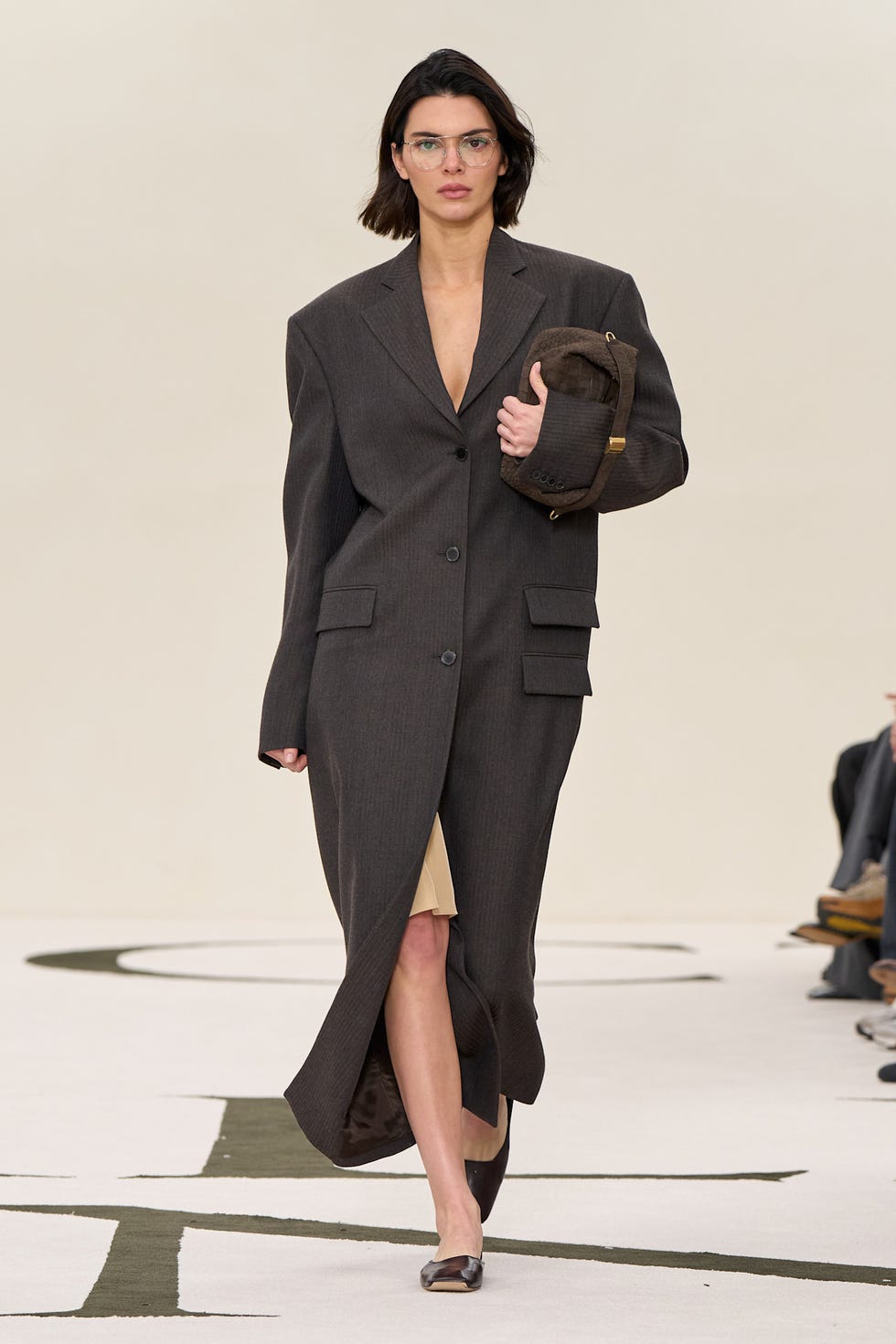
Calvin Klein fall 2025.
Office drama has been bubbling up in fashion for some time now. Three years ago, with remote work still influencing WFH-friendly fashion and “quiet quitting” on the ascendance, I wrote about the way designers were starting to satirize office wear staples, cutting them up, cropping them, or even creating a giant, Office Space-meets-Stop Making Sense suit out of Post-it notes. There was a playful, campy quality to the way designers embraced these shibboleths, a gentle mocking of the costumes of power. (“The suit has always been drag,” author Sarah Jaffe observed when I interviewed her for the piece.) The following year, as the RTO push began in earnest, my colleague Kathleen Hou brought us a treatise on the hybrid-work-friendly “businesswoman special” aesthetic, which combined oversized blazers and suiting with baggy jeans (think the 2020s answer to the “corporate at the club” aesthetic). Even non-9 to 5ers like Hailey Bieber and Kendall Jenner were all over this look, suggesting that the status-y connotations of office wear hold true even if you never darken the door of a corporate lobby.
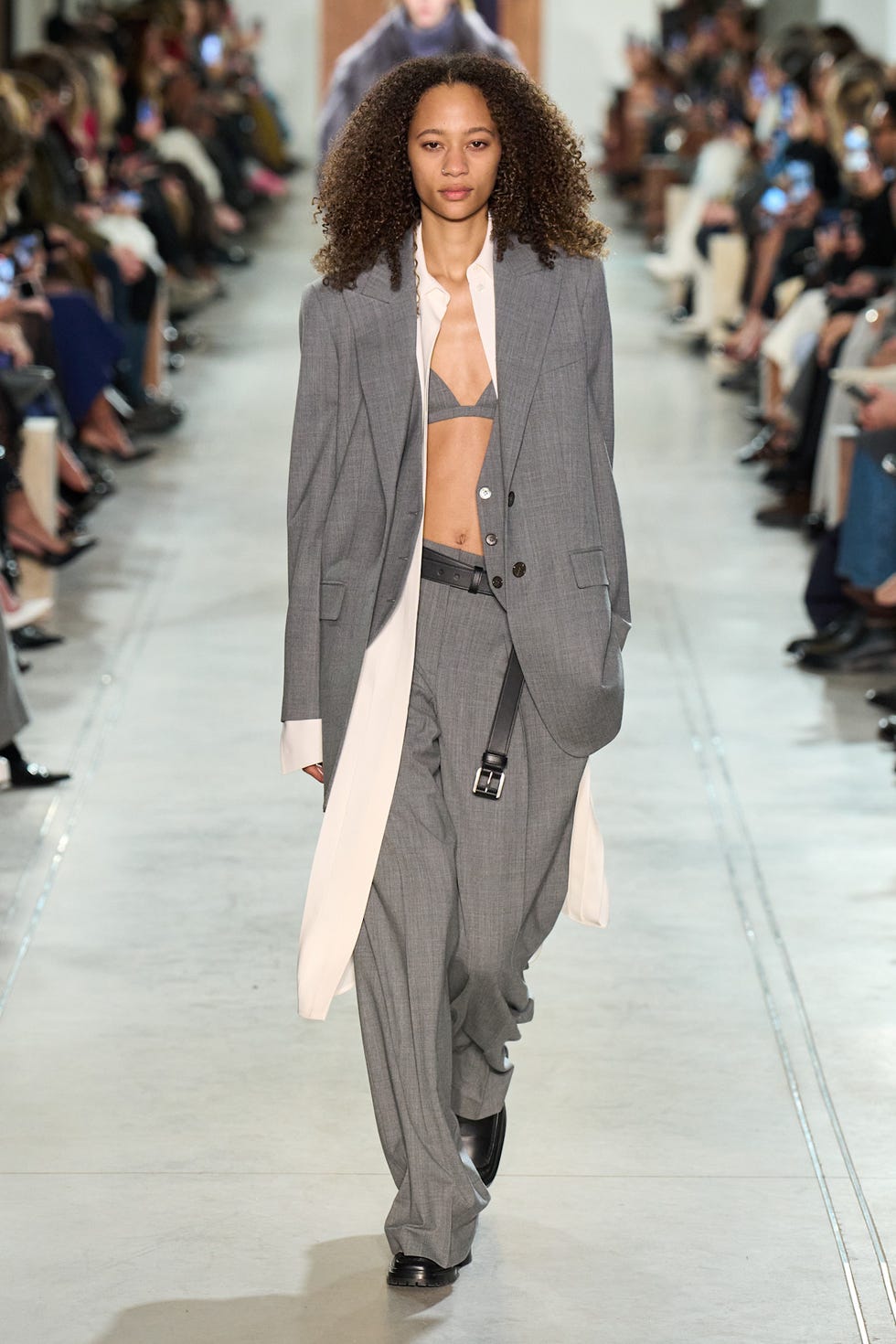
Michael Kors fall 2025.
Increasingly, those kinds of suiting-as-blank-canvas propositions have faded away. Now that the girlboss era is long gone, more literal, menswear-influenced totems of power seem to be back, both on the runway and in our wardrobes. McCartney’s collection featured blazers that were intentionally oversized, trailing lapels and cuffs, the “boyfriend jeans” of suiting. MyTheresa’s Tiffany Hsu joked to Kristen Bateman in our March issue that she wants to dress like Patrick Bateman—who’s once again in the zeitgeist thanks to Luca Guadagnino’s in-the-works adaptation of American Psycho.
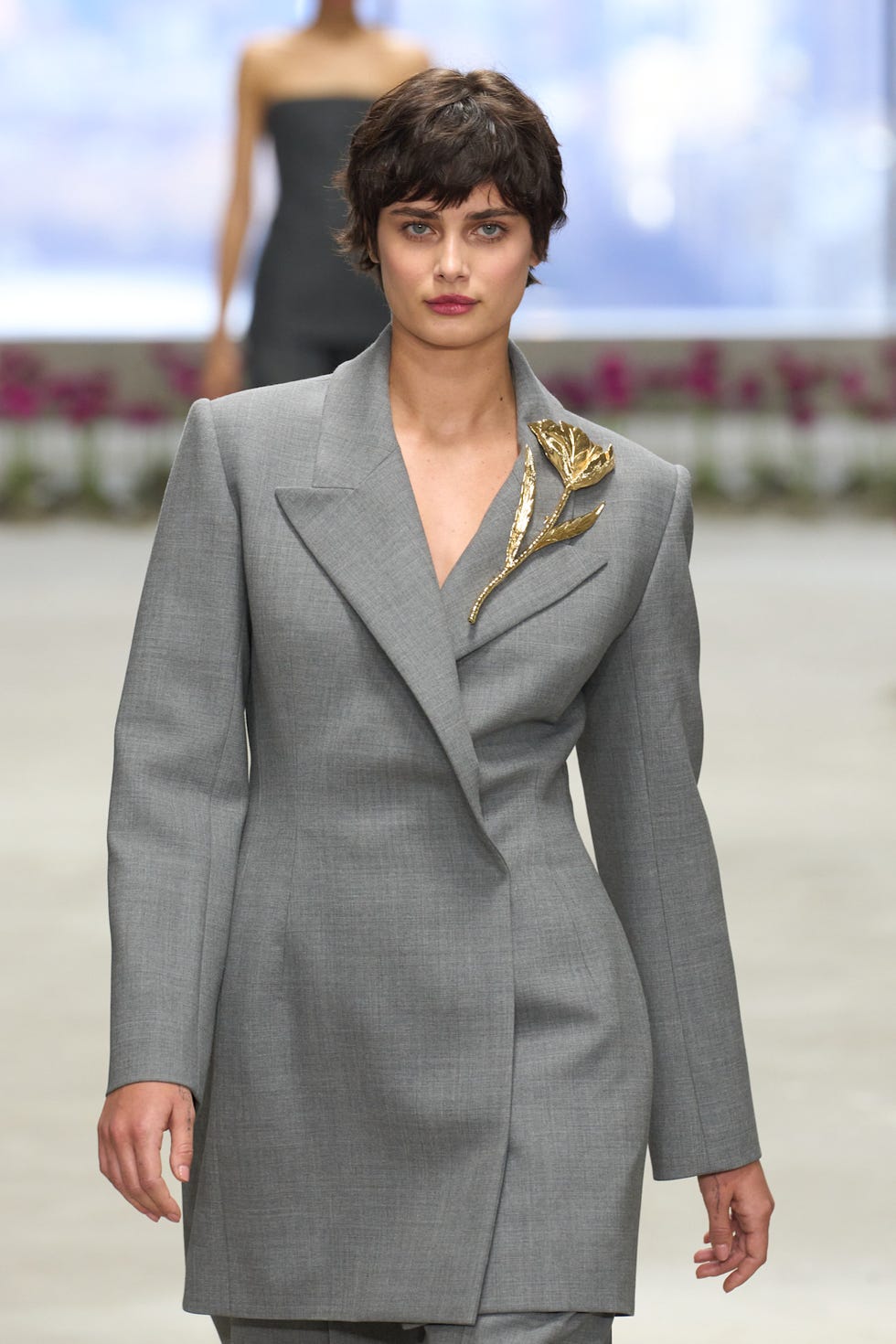
Carolina Herrera fall 2025.
And while Severance is an extreme, sci-fi literalization of the craving for (and the ultimate impossibility of) work-life balance, this contradiction does seem to be something designers are eager to explore. When our personal lives and social media feeds can be monetizable, or at least can help us stand out in the attention economy and get work, the divide between workwear vs. “life” wear is just as muddled—which may be why designers like McCartney and Wade are looking to dress our outies as well as our innies.
elle




